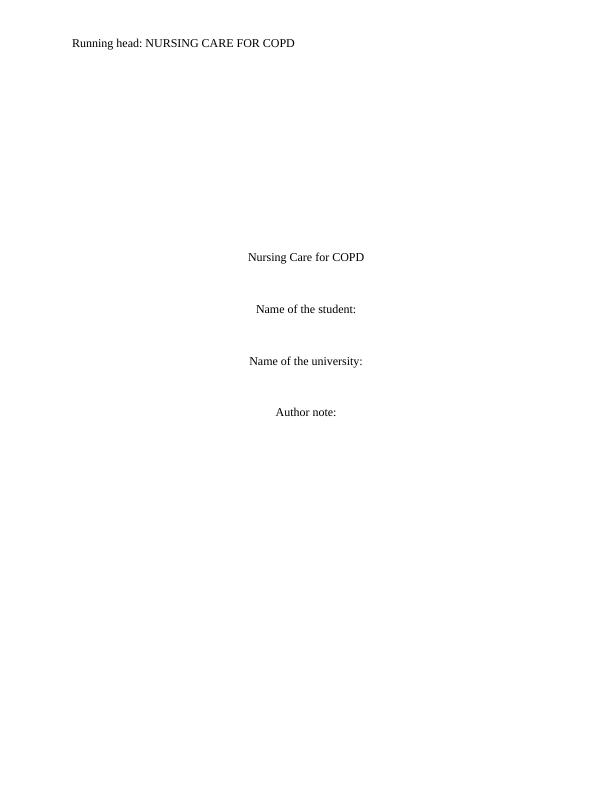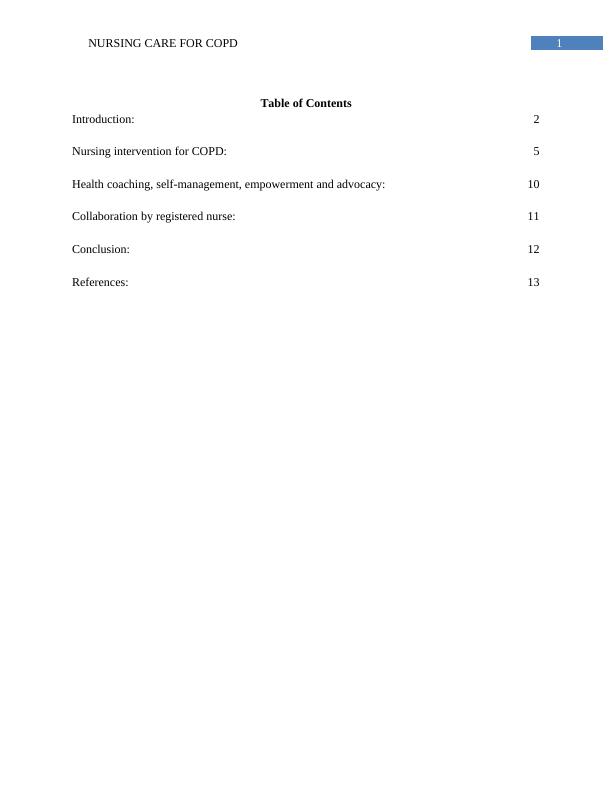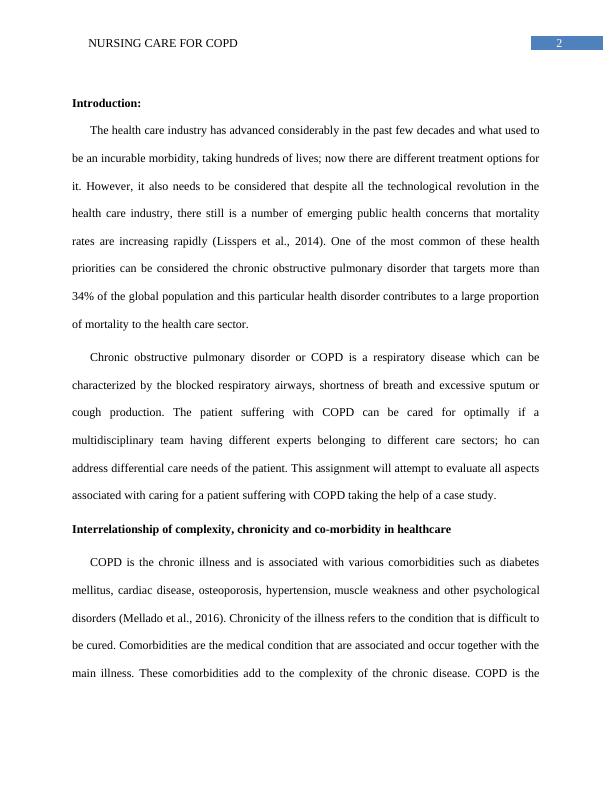Health Coaching, Self-Management, Empowerment and Advocacy for COPD
14 Pages3349 Words44 Views
Added on 2020-03-23
About This Document
NURSING CARE FOR COPD 1 NURSING CARE FOR COPD Nursing Care for COPD Name of the student: Name of the university: Author note: Introduction: 2 Nursing intervention for COPD: 5 Health coaching, self-management, empowerment and advocacy: 10 Collaboration by registered nurse: 11 Conclusion: 12 References: 13 Introduction: The health care industry has advanced considerably in the past few decades and what used to be an incurable morbidity, taking hundreds of lives; now there are different treatment options for
Health Coaching, Self-Management, Empowerment and Advocacy for COPD
Added on 2020-03-23
ShareRelated Documents
End of preview
Want to access all the pages? Upload your documents or become a member.
Essay on Pulmonary Obstructive Case Study - Desklib
|19
|5136
|322
Role of Nurse in COPD Care
|22
|8178
|310
Case Study of Patient with COPD
|7
|1864
|37
Chronic Obstructive Pulmonary Disease (COPD) - PDF
|10
|3373
|412
(PDF) Pathophysiology of Chronic Obstructive Pulmonary Disease (COPD)
|16
|3650
|128
Palliative Care: Strategies for COPD Exacerbation Management
|6
|1682
|50




